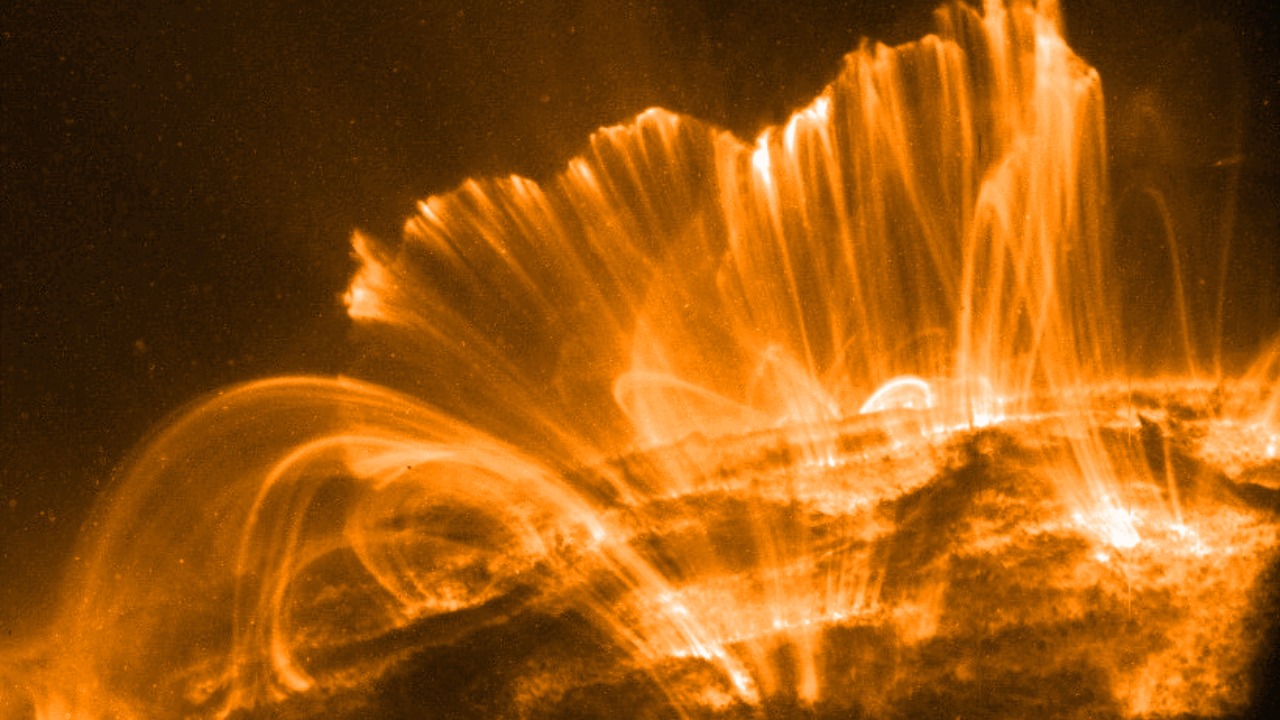
Scientists are increasingly concerned about the potential impact of the next major solar flare on Earth. Recent studies and simulations highlight our lack of preparedness for such an event, which could disrupt global communications and power systems. As we become more dependent on technology, understanding the risks associated with solar flares becomes even more critical.
Understanding Solar Flares and Their Potential Impact

Solar flares are intense bursts of radiation arising from the release of magnetic energy associated with sunspots. These eruptions are the most significant events in our solar system, capable of affecting the entire heliosphere. The sun’s magnetic field lines twist and tangle, building potential energy that is eventually released as a solar flare. These flares spew out streams of charged particles, which, when directed toward Earth, can penetrate the planet’s magnetic field and cause disturbances.
Historically, one of the most well-known solar flares occurred during the Carrington Event of 1859. The event caused widespread disruptions, including telegraph systems failures and auroras visible at lower latitudes. If a similar event were to occur today, the consequences could be far more severe, given our reliance on technology. Modern technology, including GPS systems, power grids, and satellite communications, are particularly susceptible to the intense electromagnetic radiation from solar flares.
Current Preparedness Levels and Challenges

Recent simulation studies underscore significant gaps in our preparedness for solar storms. These simulations reveal that our existing infrastructure is ill-equipped to handle the potential impact of a major solar flare. For instance, aging power grids are particularly vulnerable, with transformers at risk of overloading and failing. Additionally, our dependency on satellite communications means that a well-aimed solar flare could disrupt everything from internet services to navigation systems.
While some policies and emergency plans are in place, they often fall short of the comprehensive strategies needed to mitigate the effects of solar flares. Many countries lack coordinated plans for rapid response, and international cooperation is limited. Policymakers need to prioritize the development of robust strategies to address these challenges, including upgrading infrastructure and improving response protocols.
The Role of Scientific Research and Technology in Mitigation

Scientific research is crucial in enhancing our ability to predict and mitigate the impact of solar flares. NASA missions are at the forefront of efforts to predict the severity and timing of solar storms. By studying the sun’s activity, scientists aim to develop models that can provide early warnings, allowing for timely protective measures. Advances in technology, such as the development of more resilient satellites and power grids, could also help shield critical infrastructure from solar flare damage.
International collaboration is essential in this endeavor. Sharing data and resources can accelerate the development of effective response strategies and technologies. Countries must work together to establish guidelines and protocols that can be implemented globally to safeguard against the threats posed by solar flares.
Economic and Societal Implications

The economic impact of a major solar flare could be staggering. A powerful solar storm could cause billions of dollars in damages to infrastructure, including power grids and communication systems. The cost of mitigation efforts, such as upgrading infrastructure and developing new technologies, adds to the financial burden. Moreover, the recovery period could be lengthy, further exacerbating economic losses.
Socially, the implications are equally concerning. Prolonged power outages and communication breakdowns could disrupt daily life, affecting everything from healthcare to transportation. Public safety could be jeopardized, and economies could suffer as businesses struggle to operate without reliable power and communication. If a major solar flare were to occur, the long-term consequences could challenge our technological dependence and test our resilience as a society.
Future Outlook and the Need for Preparedness

Raising awareness of the risks associated with solar flares is crucial. Governments and the public must recognize the potential threat and push for increased investment in scientific research and infrastructure upgrades. By enhancing our understanding of solar activity and improving our readiness, we can better prepare for future solar storms.
Investing in resilient systems and practices is essential to reducing vulnerability and enhancing recovery. Developing more robust infrastructure and improving communication and response strategies will help minimize the impact of solar flares. As our reliance on technology grows, building resilience becomes increasingly important to ensure that we are equipped to handle the challenges posed by solar flares.